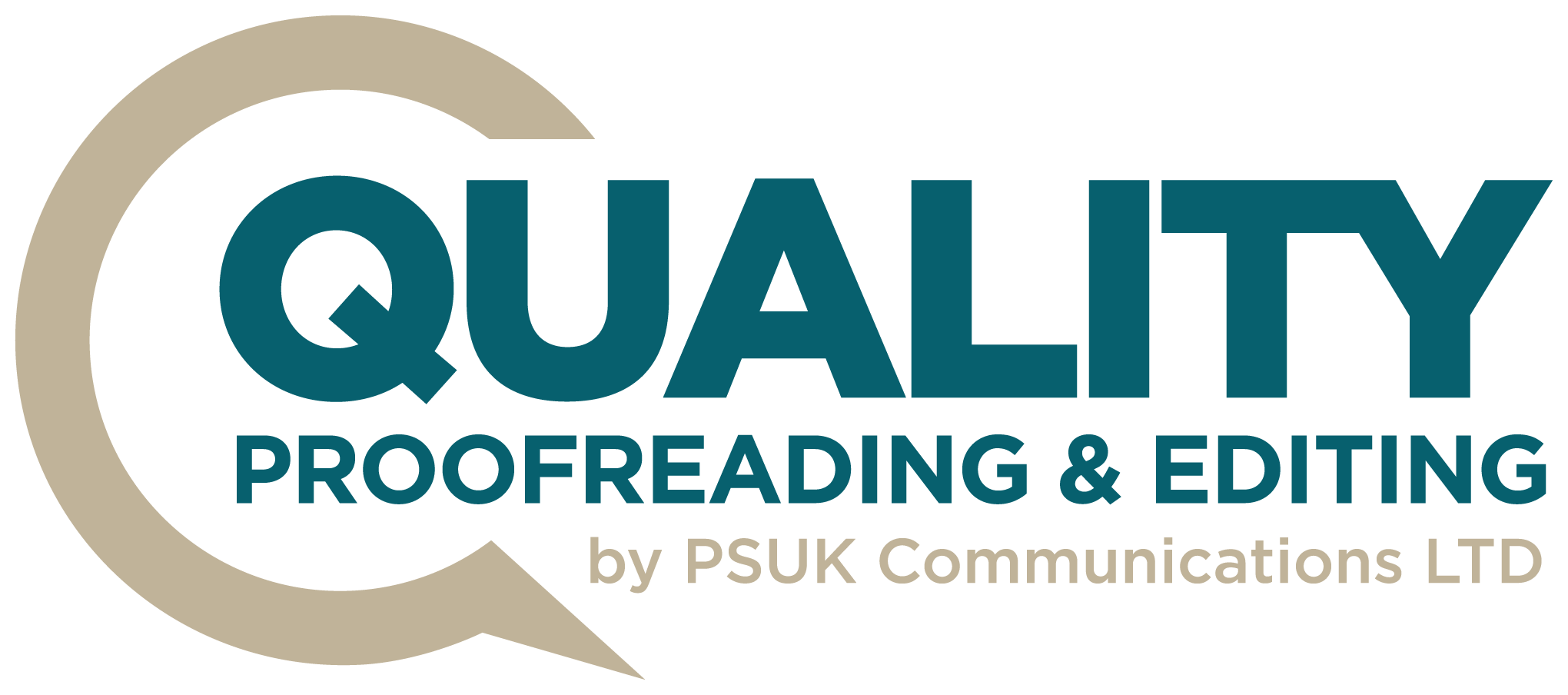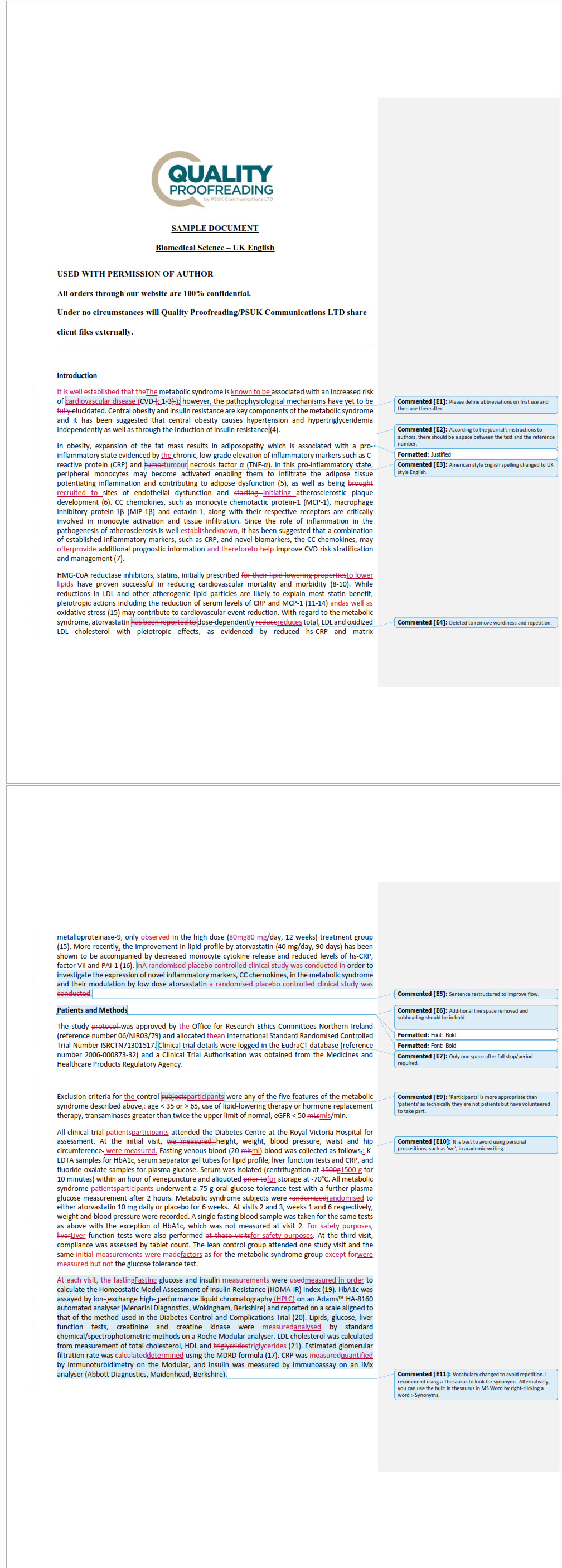Academic journals have exceptionally high standards with regards to the content, structure and formatting of manuscripts which all submissions are required to meet before they will be considered for publication. It is vital, therefore, that you check your manuscript thoroughly, prior to submission.
To help, we have produced a checklist of things your submission should comply with.
Formatting your manuscript
- Organize your manuscript correctly. The sections should be in the right order and you must place each of the following on individual pages: title page, abstract, references, appendices, content footnotes, tables, and figures.
- Make sure that, starting with the title page, all pages are numbered and in the correct order.
- Ensure that your manuscript is double-spaced. This includes not only the content but footnotes, quotations, author notes, references, etc.
- Check your page margins are the correct width. They should be a minimum of 2.54cm or 1 inch wide.
- Are you writing in the correct form of English? Although the same language, British and American English have variations in spelling, punctuation and occasionally use different vocabulary.
- Finally, as different journals sometimes require manuscripts to be formatted in specific ways ensure your manuscript meets the requirements of the journal you are submitting to. (For example, do they use APA, Oxford or Harvard referencing?)
Your title page and abstract
- Your title should be a maximum of 12 words in length and your abstract no more than 300 words.
- Ensure your title page includes: the running head, article title, byline, and author note.
Internal headings
- Make sure your headings correctly match the manuscript’s structure and that headings of the same level use identical formatting.
Abbreviations, symbols and measurement units
- 1. You should only use abbreviations if absolutely necessary. When you do, you should always make it completely clear what has been abbreviated. E.g., BBC (British Broadcasting Corporation). This includes abbreviations in figures and tables.
- You should also identify the meaning of any scientific units or mathematical symbols which are not commonly recognized, such as Greek letters.
- For best practice, use both metric and imperial measurements, e.g. It was 1.0 m (39.37 in) tall.
References and quotations
- You should cite your references in both the text and your reference list and ensure that they are listed alphabetically by author surname.
- Each book reference must include the page numbers for all articles or chapters you have referred to.
- You should ensure that page or paragraph numbers are provided in the manuscript for all the quotations you use.
Completing author notes
- Check that your (and any other author’s) departmental affiliation is given in the author note and, if this is different to the affiliation in the byline, ensure you include an up to date contact address.
Footnotes
- Footnotes should be clearly indicated in the body of the manuscript and they should be correctly numbered. Check carefully that they match up.
Figures and tables
- All tables you use in your manuscript need to be referred to in the main content.
- You should also provide a heading for every table and table column.
- All tables and figures should be numbered consecutively and in the order in which they are presented.
- You should ensure that the size, resolution and format of any figures you use match your journal’s requirements and will remain fully legible if resized.
Getting copyright permission
- Your manuscript cannot be published if it contains any copyrighted element that you have not got written permission to use. This includes text, data, research, figures or tables. Copyright can apply to both existing publications and unpublished material. Make sure you have got written permission from the copyright holder to include these elements in your manuscript.
Proofreading
- 1. Any manuscript submitted for publication should be completely free of grammar, spelling, and punctuation errors.
- The text should be checked to make sure that that writing is coherent and that paragraph and sentence structure is accurate.
- In addition, submissions to academic journals should be checked to ensure that the writing is composed in a suitable academic style and meets with expected conventions.
Submitting your manuscript correctly
- Your manuscript should be accompanied by a cover letter which includes your full contact details (name, postal and e-mail addresses and telephone number). Do not use an unprofessional sounding email address.
- The letter should concisely outline the main features of your manuscript and also inform the editor that it is an original, unpublished work not currently being considered elsewhere for publication.
- If you are submitting your manuscript in paper format, ensure the documents are assembled neatly and make sure you have checked the name and address of the journal’s editor before sending.
Conclusion
Getting your manuscript ready for submitting to an academic journal can be a painstaking task that requires both patience and commitment. However, if you follow the guidance we have provided in our checklist, it will help your manuscript meet the high standards that academic journals insist upon.
Comments are closed.




